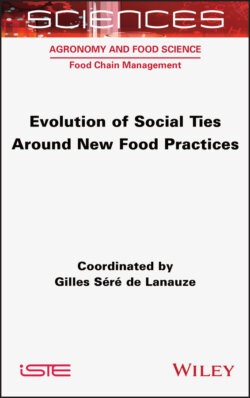Читать книгу Evolution of Social Ties around New Food Practices - Группа авторов - Страница 24
1.3.3. The different practices of eating together 1.3.3.1. A wide variety of eating together practices
ОглавлениеTo begin with, the results make it possible to distinguish two types of eating together: the “everyday” and the more “festive”, or at least between people who are not part of the same household. It is then interesting to question the extent to which these different forms of eating together can influence eating well. So-called “festive” conviviality (which implies that we do not eat only with members of our household) refers rather to exceptional moments of sharing, which are associated with the consumption of particular products (alcohol, desserts) and special organization (longer meal time, more complete meal structure with aperitif, starter, main course, cheese, dessert, etc.). On the host’s side, there are unspoken rules: the products to be favored are rather rich products and they must be provided in ample quantities. For the guests, one rule is that they must conform to the meal that is offered to them and that hunger must take a back seat in order to honor what has been prepared for them. Camille explains:
– So you can estimate your hunger level, but during meals you sometimes force yourself to sit at the table and say “I’d better not leave this”.
– No, we never get hungry, we put it in the fridge and we know we’ll eat it at any time, no, I never force myself, at home anyway [laughs].
– Do you force yourself when sitting at other people’s tables?
– Well, yes, if you have to.
– Why if you have to?
– Well, I don’t know the kitchen, there’s… I know that grandma serves you and if you don’t finish the plate she gets the impression that it’s not good, it’s very stupid, but you know that you have to finish; but it doesn’t happen to me often.
– You don’t want to offend?
– Yes [laughs], yes, I don’t want to offend grandma!
These results refer to the fact that, under such conditions, individuals are more likely to eat beyond their hunger and, what is more, eat products with high energy density.
In the context of daily eating together, the practices of the individuals present at the table are modified. Indeed, the rules integrated by the person in charge of the food, in the role of a good provider (Evans 2011), instead assume the provision of varied and balanced food, while taking care to ensure the pleasure of the people eating. Roxane explains:
– We rarely eat the same thing twice in a row, it happens but hey…
– Why?
– Well, because it’s true that at lunchtime… it’s true that we like eating in the evening.
– OK, you both feel like you eat fast at lunch so in the evening you don’t want to do that?
– Yes, that’s it: it’s a more quiet time.
Thus, the feeling of shared pleasure around a meal implies eating certain foods and avoiding others (e.g. leftovers). In particular, the results confirm that starting a household or having a child encourages the preparation of balanced meals.
In addition to these results, between an eating together practice that can be characterized as “festive” and another that is more “daily”, the results make it possible to distinguish households in which eating together is established/systematized/codified, whereas in others this practice is more flexible/random. This is notably the case of Amélie, who tries to maintain the family meal with her daughter, despite the fact that she has difficulty extracting her from her video games:
That’s the problem, she spends a lot of time playing video games, so it has a lot of influence on our eating habits because it’s often “come to the table, come to the table, come help me make food, save, come and cook dinner…!” So, in fact, I waste time asking her for help, so after a while I get tired of it, I leave what I’m doing, I give up, I make fries and ham, “come on, you’re eating, you have to go back to school”, so it has an influence.
For Noémie and her mother, on the other hand, the rules of the shared meal are established, knowing that “every evening [they] eat together”, and that they have even gradually established weekly rituals such as “leftover meals” during which they finish all the leftovers of the week, as well as “junk food meals”, during which they allow themselves to deviate from their respective diets.
In conclusion, the results allow us to account for the diversity of practices by distinguishing between eating together practices that can be described as “festive” or as “everyday”, and by distinguishing between systematized/anchored eating together practices and others that are more flexible/random.
